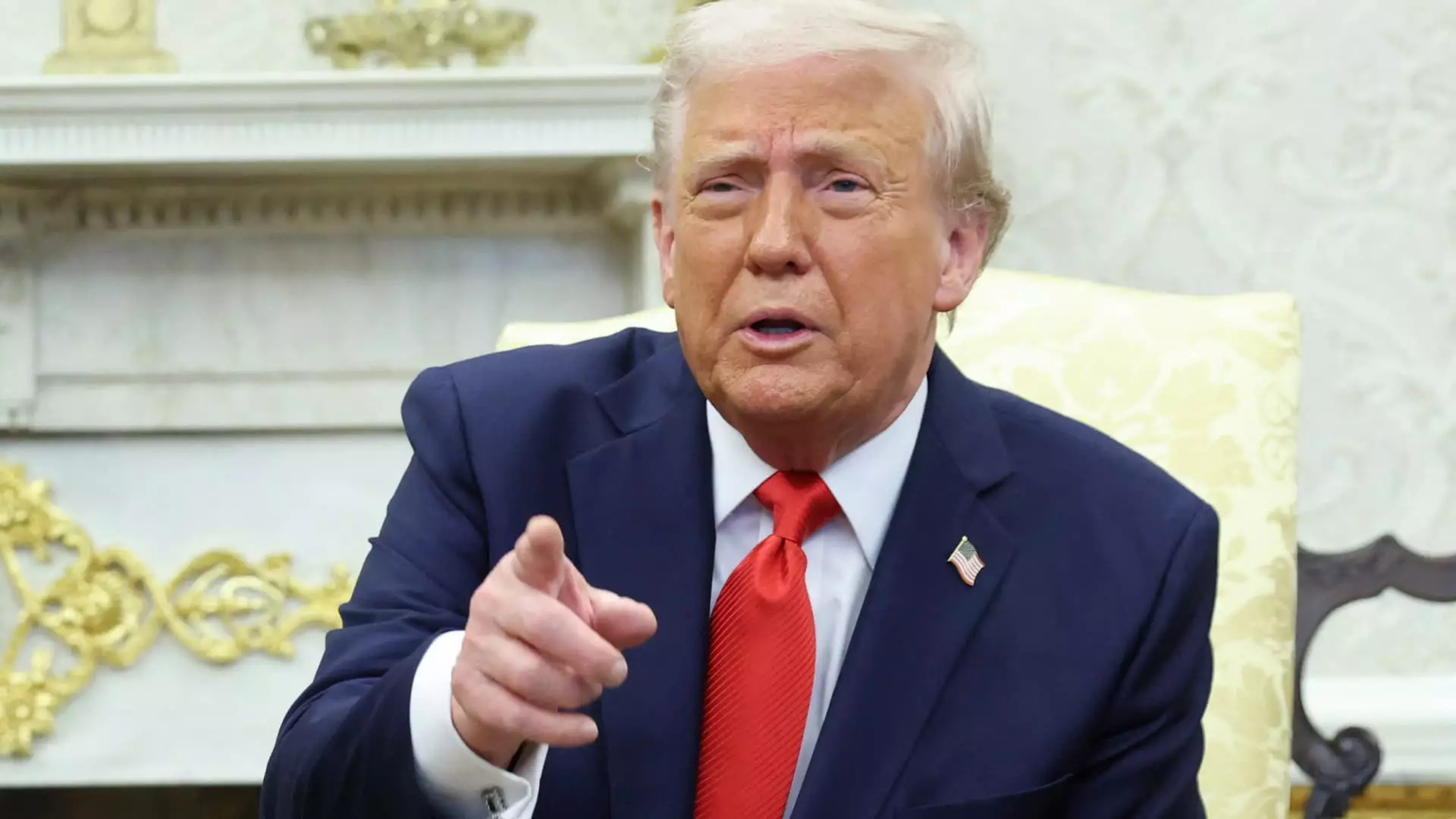In a recent meeting, President Trump expressed his willingness to assist American automakers in their transition to domestic production. While this may sound like music to the ears of industry players, the reality suggests a more complex narrative. The façade of support could potentially lead to complacency among corporations that could take Trump’s statements at face value instead of proactively addressing deeper structural problems within their operations. Instead of genuinely investing in innovation and efficiency, automakers might rely on governmental leniency and miss the boat on actual competitive advancements.
Economic Tightrope Walk
Trump’s automotive tariffs, which spurred a surge in stock prices for major car manufacturers, have not unfolded without consequence. The proposed 25% tariffs on imported vehicles remain a double-edged sword. While they momentarily buoy domestic stock values, they also hinder the very flexibility that automakers need to innovate and stay competitive on a global scale. It’s crucial to understand that reliance on protective tariffs can breed a false sense of security, leading to inefficiencies that could ultimately erode market positions when the tariffs are lifted or adjusted. This economic tightrope walk can harm American business interests in the long run, especially as companies like Hyundai and Jaguar demonstrate agility by reevaluating their U.S. strategies.
Stock Market Fluctuations: A Red Herring
The brief uptick in shares for companies like Ford and General Motors tells a different story than that implied by Trump’s overtures. Investors react not only to news coverage but also to market sentiment, and this volatility seems superficial. While the stocks experienced gains of 1% to 4%, such fluctuations do not signify long-term growth or stability. Instead, they reflect short-term reactions to political theater rather than genuine advancements in the automotive sector. Investors should be cautious; such jumps can easily reverse, revealing the unsustainable nature of relying on political whims to dictate market performance.
The Tariff Trap
Despite offering supposed ‘time’ for automakers to transition their supply chains, it appears the clock is ticking against them. The automotive tariffs imposed by Trump, maintained despite recent exemptions for tech companies, place an additional burden on automotive manufacturers who are often tied to international supply chains. Isolating the U.S. market under the pretext of patriotism could backfire, costing consumers more and stifling the industry’s potential growth. With automakers like Jaguar halting U.S. shipments altogether, it is evident that the real implications of these tariffs are beginning to manifest in drastic ways, not only affecting market dynamics but also consumer choices and accessibility.
Consumer Impact: The Unseen Consequence
The strategy of holding manufacturers to domestic production while imposing tariffs inevitably leads to one glaring consequence: consumers will pay the price. The promise of rebuilding the industry with a focus on local production may ultimately translate to increased costs for American consumers. With companies like Hyundai pledging to hold prices steady, others may not be able to afford such commitments without cutting corners. As the public adapts to market realities, there exists a tangible risk of alienating an already financially burdened consumer base in pursuit of a politically motivated agenda.
While the optimism surrounding Trump’s automotive policy generates short-lived enthusiasm among investors, the underlying economic implications could pose serious risks that warrant critical evaluation from all stakeholders involved.

